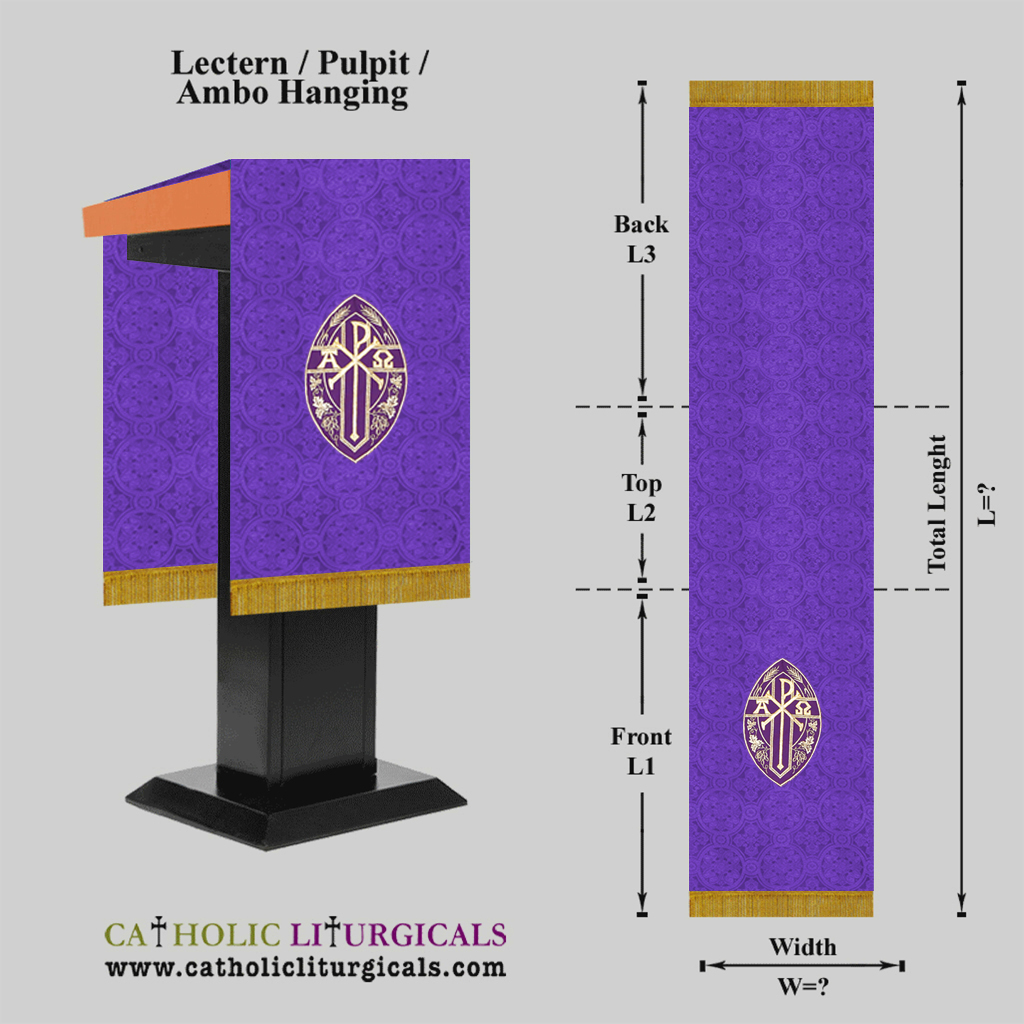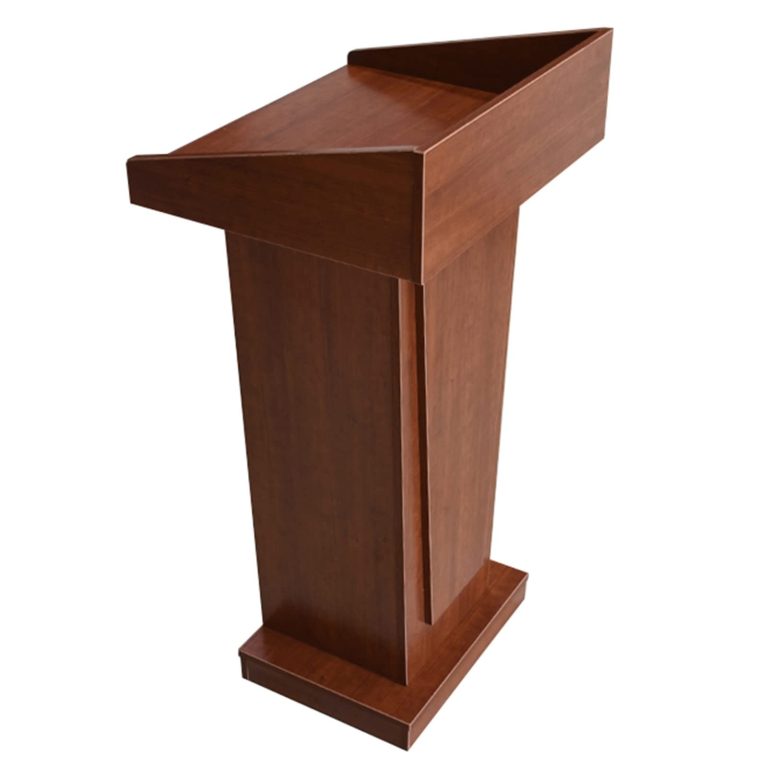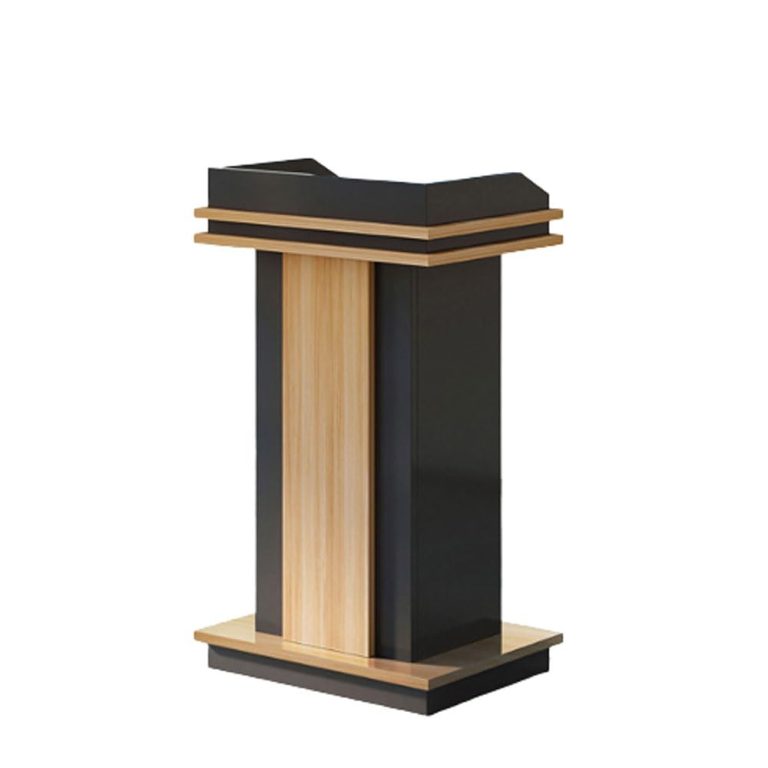What is a Podium? Why is It Called a Podium? Unveiled!
A podium is a small platform. People stand on it to speak or perform.
But, have you ever wondered why it’s called a podium? The word “podium” comes from the Greek word “podion,” meaning “foot. ” This makes sense because a podium is something you stand on. In many settings, a podium is used to make someone more visible or to give them a place to rest their notes.
Whether in classrooms, churches, or sports events, podiums play a key role in presentations. This blog post will explore the origins and uses of podiums, helping you understand why they are such important tools.

Credit: www.catholicliturgicals.com
Definition Of A Podium
A podium is a small platform used to elevate a person above the surrounding area. The term comes from the Greek word “podion,” meaning “foot.” This platform provides a clear view for the audience and adds importance to the speaker or performer.
Characteristics
A podium usually has a flat top. It stands on a sturdy base. Many podiums are designed to be portable. Some have built-in features like microphones or lights. They come in various materials, such as wood, metal, or plastic.
Common Uses
Podiums are common in schools, churches, and conference halls. Teachers use them during lectures. Speakers stand on them to address an audience. They are also seen at award ceremonies. Here, winners step onto the podium to receive their medals. Podiums help draw attention to the person using them.

Credit: www.podium.com
Historical Background
The term podium has a rich history. It traces its origins back to ancient times. Understanding this history helps appreciate its significance and evolution.
Origins
The word podium comes from the Greek word “podion”, meaning “foot.” The ancient Greeks used small platforms for speeches and ceremonies. These platforms elevated the speaker above the crowd.
In Roman times, podiums were used in amphitheaters. They were a feature in important buildings, like temples. These structures often had steps leading up to them, emphasizing the importance of the person speaking.
Evolution Over Time
Over the centuries, the design and purpose of podiums changed. In medieval Europe, podiums were used in churches. They were known as pulpits and were elevated platforms for priests to deliver sermons.
During the Renaissance, podiums became more elaborate. They were used in universities and public gatherings. They symbolized authority and knowledge.
In modern times, podiums are found in various settings. They are used in schools, conferences, and even sports events. The design has evolved to include microphones and other technology, making them more functional.
Below is a table summarizing the evolution of podiums:
| Time Period | Usage | Design Features |
|---|---|---|
| Ancient Greece | Speeches and ceremonies | Small, elevated platforms |
| Roman Times | Amphitheaters and temples | Steps leading up to the platform |
| Medieval Europe | Churches | Known as pulpits, used for sermons |
| Renaissance | Universities and public gatherings | More elaborate designs |
| Modern Times | Schools, conferences, sports events | Includes microphones and technology |
The journey of the podium reflects its significance in public speaking. From ancient Greece to modern times, it has been a symbol of authority and presence.
Etymology Of Podium
The word podium has an interesting origin. It is not just a modern term. The term has deep roots in ancient languages. Understanding its etymology can help appreciate its significance.
Root Words
The term podium comes from the Greek word podion. The Greek word podion means “little foot.” It is a diminutive of the word pous, which means “foot.” This connection to “foot” gives us a clue about its meaning.
In Latin, the word podium also means “foot” or “base.” The Latin influence is strong in many English words. Knowing this, it is easier to see how podium relates to a platform or base.
Language Influence
The word podium entered the English language in the 18th century. It was borrowed from Latin and Greek. English often borrows from these languages for scientific and architectural terms.
Today, a podium refers to any raised platform. It is used in schools, offices, and events. The original meaning of “foot” or “base” still applies. It supports a speaker or object above the ground.
| Language | Word | Meaning |
|---|---|---|
| Greek | Podion | Little Foot |
| Latin | Podium | Foot/Base |
| English | Podium | Raised Platform |
Understanding the etymology of podium helps us see its evolution. The word has maintained its core meaning over centuries. It continues to be a significant term in various contexts.

Credit: arkansasadvocate.com
Modern-day Significance
The podium holds a special place in today’s world. It is more than just a raised platform. It is a symbol of achievement and recognition. From sports events to academic ceremonies, the podium is where success is celebrated.
Its significance extends beyond physical elevation. It represents honor and respect. Individuals who stand on a podium are often seen as leaders or champions in their fields. The podium gives them a stage to share their message or celebrate their victory.
Cultural Importance
Different cultures view the podium in unique ways. In many countries, it is a sign of respect. It highlights the importance of the speaker or the achiever. In sports, the podium is where winners receive their medals. It is a moment of pride and joy.
In academic settings, the podium is where scholars present their research. It is a place of knowledge sharing. The podium helps bridge the gap between the speaker and the audience. It creates a connection that is vital for communication.
Symbolism
The podium is rich in symbolism. It stands for success and recognition. When someone steps onto a podium, they are elevated above the rest. This act signifies their achievement and sets them apart.
The podium also symbolizes a platform for important messages. It is where leaders address their followers. It is where change-makers share their vision. The elevated position of the podium gives authority to the speaker. It ensures their message is heard loud and clear.
Frequently Asked Questions
What Is A Podium?
A podium is a raised platform. Speakers and winners use it to stand and be seen.
Why Is It Called A Podium?
The word “podium” comes from Latin and Greek. It means “foot” or “base. “
Where Are Podiums Commonly Used?
Podiums are used in events, speeches, and sports. They make speakers or winners more visible.
Conclusion
A podium is more than just a platform. It holds significant meaning. Its name comes from the Greek word “podion,” meaning “foot. ” This term highlights its purpose for standing and speaking. Podiums are crucial in various events, from sports to speeches.
They elevate speakers, making them visible and heard. Understanding its history and function enriches our appreciation. So next time you see a podium, remember its roots and importance. Simple, yet impactful.





